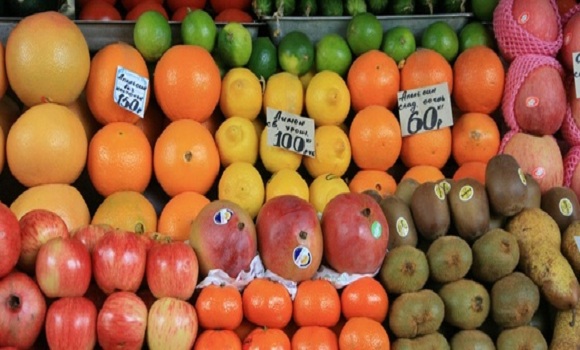Paul Conley
One doesn’t have to work in the food industry to know that things have gone a bit crazy in pricing.
While some cost increases can be absorbed by wholesalers and retailers, other price hikes are just too much for the folks in the middle to handle. Those price boosts get passed on to consumers, who wind up knowing more than they ever intended to know about droughts, plant diseases, and animal plagues that lift commodity prices.
In most cases, rising prices are temporary; eventually a new ceiling is hit. But sometimes the numbers seem to climb and climb (and climb) forever.
Here are our picks for the five foods—all of which have already seen substantial price jumps—that are most likely to continue to rise in price through 2014, and well beyond.
5. Artichokes
It’s hard to fully comprehend how bad the California weather situation has become. But let’s try. Last year was the driest the state has ever seen. That’s pretty bad news for a state that is, geologically, a bit of a desert. If not for man’s ability to move and store water to irrigate fields, California would look a lot like Nevada.
But what if there just wasn’t enough water available to store, move, and irrigate with? What would that look like?
It would look like this:

On the left is Folsom Lake just a few years ago in 2011. On the right is what the lake, if we can still call it a lake, looks like now.
The drought has had an obvious effect on produce prices, as California grows roughly half of the fruits and vegetables consumed in the United States. And since there’s nothing to indicate that the drought is about to turn around, prices of nearly all produce items will continue to face upward pressure.
So why focus on artichokes? Because California grows 99% of the nation’s artichoke supplies. Unlike say, cherries or lettuce or tomatoes, artichokes just can’t be grown in many places.
A continuing threat to a limited supply likely means higher prices for artichokes in the foreseeable future.
4. Oranges
Unlike artichokes, oranges grow in lots of places. Or at least they used to.
Nowadays, the places where people can grow oranges is shrinking rapidly.
The California drought is a factor, of course. But there are orange groves in Florida, Georgia, and elsewhere in the South as well. Those groves are under siege by a number of nasty things, particularly the insect-born disease called citrus greening.
Citrus greening has grown unabated for roughly 100 years, picking up speed and spreading geographically at an exponential rate. Millions of acres have already been destroyed around the world. The disease arrived in the U.S. just five years ago, and rapidly spread across the country since. Some 200,000 acres of orange groves have been lost already.
There’s no cure for citrus greening, and extensive use of pesticides have not stopped the insects that carry the disease.
Unless and until there’s a breakthrough—and the only one possible would be to find a way to genetically modify oranges to resist the disease—there may be nothing that can relieve the pressure on orange prices.
3. Apples
Whereas oranges are under attack by Mother Nature, apples have no major problems with the environment.
But that doesn’t mean prices will fall. Apples are facing consistent and growing price pressures that are entirely market-driven.
First, many varieties of the fruit have found all-new buyers in the makers of hard cider, an alcoholic drink that is undergoing a renaissance in America.
Second, apple growers are facing growing pressure to stop the use of a chemical called diphenylamine, or DPA. There’s a good possibility that the industry will succumb to that pressure, which will make it tougher to store the fruit for long periods of time before sale.
Those two factors sound like increasing demand and shrinking supply to us, which always equal higher prices.
2. Pork
Prices for pork in all its forms will keep rising. As the porcine epidemic diarrhea (PED) virus has spread across the globe, meat processors have had to pay more for pork, warning that they’ll continue to do so for some time.
We suppose a breakthrough is possible with PEDv, but there’s no reason to be optimistic. PED is a virus, and science has not had much success in fighting those things. Certainly, there’s no reason to expect the demand for pork to fall, particularly in China.
So more price hikes seem likely.
1. Shrimp
Shrimp prices are at a 14-year high, with the rate of increase seeming to rise. In March, the latest month for which figures are available, shrimp was 61% pricier than a year earlier.
What gives?
The root of the price climbs is a disease called early mortality syndrome. Like PED, it cannot harm humans. And like PED, it kills the young in a species by targeting their digestive system.
Early mortality syndrome is sweeping through the shrimp farms of Southeast Asia, which are traditionally the largest supplier of the food to the United States. Now the disease is spreading to other seas, being found as far west as Mexico.
The good news is that early mortality syndrome is a bacterial disease, not viral. So finding an effective treatment is possible.
The bad news is that treating shrimp wouldn’t be easy. The best-case scenario seems to be finding a way to treat those creatures that live in farms. Ocean-dwelling shrimp would remain at risk.
Looks like its going to be big prices for the tiny creatures for quite awhile.


